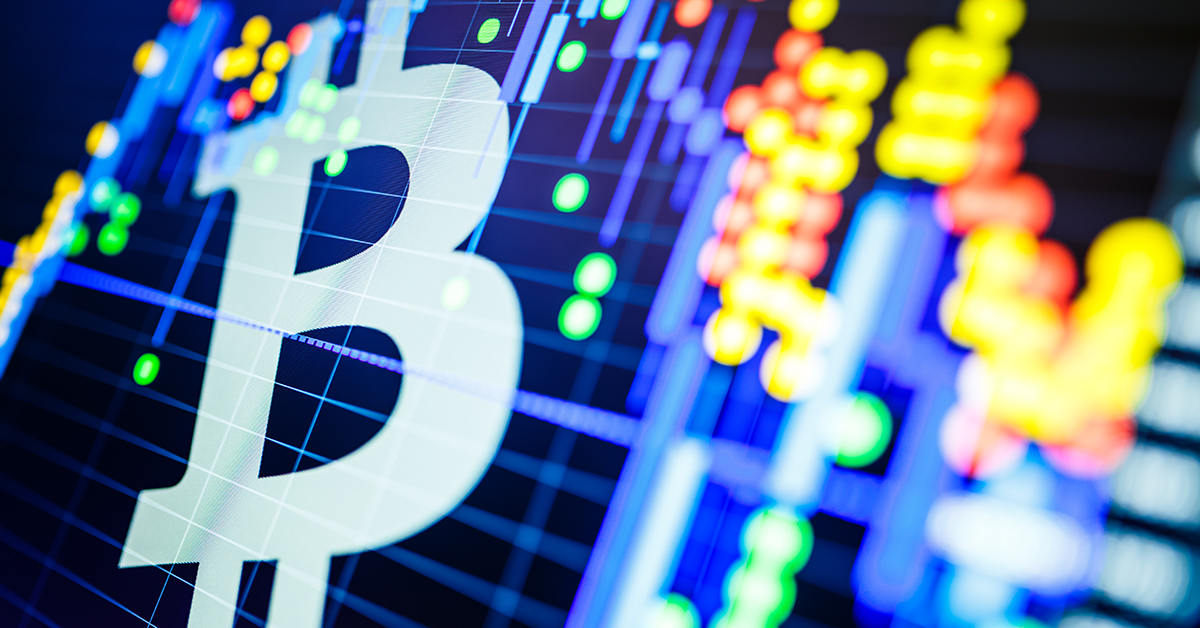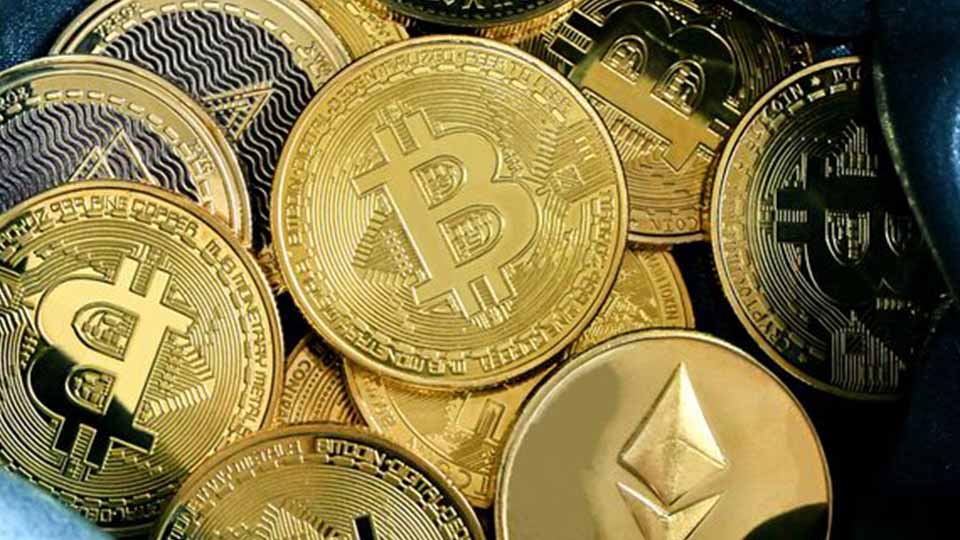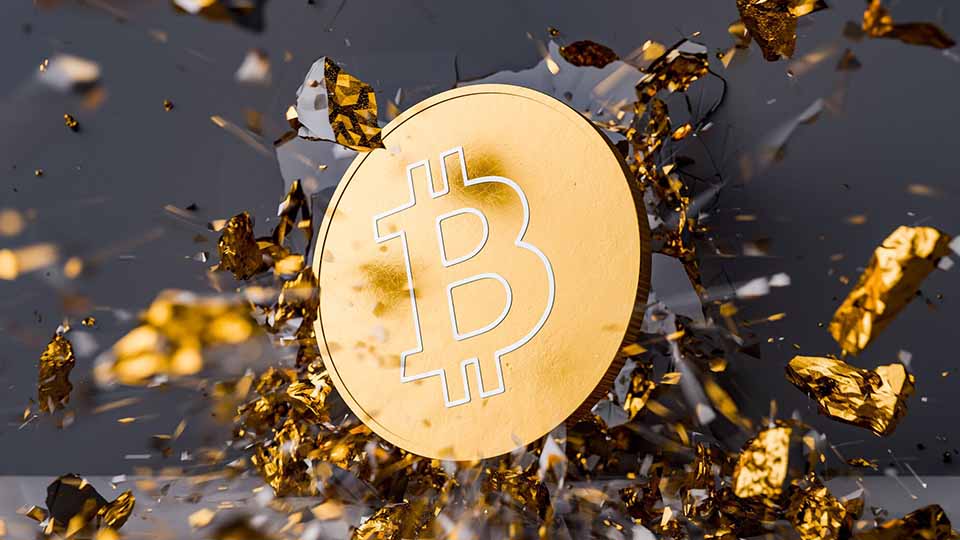Vitalik Unveils 2023 Wishlist as Ethereum's Outperformance Continues
13 January 2023
Read Time 10+ MIN
December was another tough month for both growth stocks and digital assets as Bitcoin fell 3%, Ethereum -7%, the Nasdaq Composite -9%, and the MVIS Smart Contract Leaders Index -17%.
Notably, Bitcoin's 30-day volatility is now lower than S&P 500 volatility, which is generally considered unsustainable. We think that’s unsustainable. Possible upside catalysts include a pre-packaged DCG/Genesis bankruptcy or restructuring with new equity financing, an announcement from Saudi Arabia formalizing Bitcoin mining, regulation & licenses, or a Ripple court victory or settlement. Possible downside catalysts include a disorderly DCG bankruptcy, CFIUS blocking BinanceUS’s acquisition of $1B of Voyager crypto assets, hot inflation prints, or a Ripple loss.
On the positive side, we also note the recent strength of the Chinese RMB amidst a CCP U-turn on COVID-19 and other redistributive policies. Historically, sturdier relative economic performance in China has coincided with a strong RMB, less onerous capital controls, and resilient BTC. We think this correlation is something to watch this year.
CNY vs. BTC (inverted): Falling Lines = Strengthening
Sources: Bloomberg as of 31/12/2022.
Past performance is not indicative of future results. Not a recommendation to buy or sell any of the names mentioned herein.
Lastly, as we hope for better digital assets performance in 2023, we would like to highlight three opportunities that Ethereum founder Vitalik Buterin mentioned in a recent blog:
- Mass wallet adoption: The development of wallets that are easy for people to use and capable of onboarding billions of users.
- Inflation-resistant stablecoins: The creation of stablecoins that can withstand all types of conditions, including hyperinflation, and are globally accessible.
- Ethereum-powered website logins: Technical developments that enable Ethereum to take login powers away from centralized monopolies like Facebook, Google, and Twitter and capture more market dominance on internet-based applications.
Vitalik wrote: “These are all problems that can be solved, and there is a strong drive to solve them. Rollup technology is rapidly scaling to solve scalability, and transactions already get included much more quickly on-chain than they did three years ago.”
| Digital Asset | Market Cap | 7 Days | 30 days | 90 days | 365 days |
| Bitcoin | $319.53B | -1.63% | -3.01% | -14.62% | -64.95% |
| Ethereum | $146.76B | -1.95% | -7.45% | -10.07% | -67.87% |
| Digital Asset Index | Market Cap | 7 Days | 30 days | 90 days | 365 days |
| MVIS® CryptoCompare Infrastructure Application Leaders | $12.57B | -4.00% | -20.50% | -21.19% | -78.47% |
| MarketVector™ Centralized Exchanges | $43.72B | 0.32% | -16.72% | -17.96% | -58.95% |
| MVIS® CryptoCompare Decentralized Finance Leaders | $5.96B | -5.20% | -14.52% | -27.30% | -81.01% |
| MVIS® CryptoCompare Smart Contract Leaders | $181.63B | -3.82% | -14.81% | -33.92% | -82.55% |
| MVIS® CryptoCompare Media & Entertainment Leaders | $3.88B | -8.77% | -23.78% | -48.22% | -91.53% |
Sources: Bloomberg, Messari, CryptoCompare, MVIS, VanEck research as of 31/12/2022.
Smart Contract Platforms:
Most Layer-1 smart contract platforms underperformed Bitcoin & Ethereum in December as investors sold what they could to fund redemptions amidst the overall industry deleveraging. Specifically, the continued fallout from the FTX fraud, multiple Bitcoin miner bankruptcies, and the solvency issues at DCG’s lending entity Genesis presented both fundamental and liquidity-based headwinds. Still, despite negative news related to both macroeconomics and digital assets, some key Layer-1s remained remarkably resilient. The top performers for the month, among leading smart contract platforms, included Internet Computer (ICP) +5.3% and Ethereum (ETH) -7.5%
The ICP has seen positive price action as the pace of smart contract deployment, called canisters, has accelerated to 16.6% month-to-month in December. Another positive catalyst has been the long-awaited launch of an asset bridge that connects the Ethereum network to the Internet Computer network. Still, the positive price performance was not accompanied by rising volumes. Thus, ICP was dropped from the MVIS Smart Contract Leaders Index for falling under the $25M/day level required for inclusion.
Ethereum remains the dominant L1 as network usage has remained robust and even grew by some measures in December. For example, unique daily Ethereum ERC-20 users, or wallets that sent an ERC-20 token, have increased by 4.5% on a 30-day moving average basis compared to November. Likewise, L2 settlement activity on Ethereum increased by 13.7% between October and November and a further 7.7% between November and December.
Unique Daily Ethereum ERC-20 Users
Source: Etherscan as of 31/12/2022.
Among the worst performers in Layer 1 protocols were Algorand (ALGO) -31% and Solana (SOL) -29.9%. Despite the excitement around Algorand’s yearly conference held at the end of November, Decipher, Algorand’s daily average transactions fell 25% in December compared to November, while average TVL dropped 29%. Despite the chain’s position as FIFA’s “official blockchain partner,” Algo holders saw the World Cup as a ‘sell the news’ event.
Algorand 30 Days Moving Average TVL
Source: DeFIllama as of 31/12/2022.
Solana continued to dramatically underperform its peers due largely to a decline in usership, network activity, TVL, and selling pressure related to the FTX bankruptcy. Compared to November, total Solana daily active users fell 14.3%, while Solana DeFI daily active users fell 27%, leading to TVL falling 53%. The once popular NFT application StepN has seen its inflow of SOL reverse to outflows. Additionally, major Solana NFT projects such as DeGods and y00ts have left the Solana blockchain to Ethereum and Polygon, respectively. Even with the decline in developers and developer activity, Solana still boasts more developer activity than Polygon, but with a market cap 30% smaller. We expect fundamental momentum to improve in 2023 thanks to still-resilient NFT activity, a rebirth of some DeFi activities driven by projects like Hero & Friktion, and promising new applications such as Hivemapper, a community-owned Google Maps competitor, which is bootstrapping its network on the Solana Layer 1 chain and using Helium (another Solana-based decentralized infrastructure provider) to provide GPS backup location.
Net SOL Inflow into StepN Application
Source: Dune as of 31/12/2022.
Solana Daily Active Users
Source: Dune as of 31/12/2022.
Meanwhile, Ethereum Layer 2 scaling solutions continue to operate in a league of their own in terms of user adoption momentum: Optimism (OP) had more than a 20x increase in daily active users since the beginning of the year, with 590k active users in December. Arbitrum’s growth peaked in November at around 660k active users (almost 10x the number of users in January). Optimism was also the leader in TVL growth, with a 2x increase in TVL since January. Optimism now has $615 million locked in its DeFi ecosystem. Arbitrum and Polygon have $1.11 and $1.16 billion, respectively, in value locked.
Monthly Active Users Growth (100 = 1/1/22)
Source: tokenterminal as of 31/12/2022.
Polygon has recently become the Layer 2 choice for an impressive number of globally recognized traditional brands and platforms looking to expand into web3 and NFTs (including companies such as Starbucks, Meta, and Reddit). In December, Donald Trump's NFTs on Polygon broke daily volume records for the chain.
Layer 2 solutions’ main appeal is low transaction fees. In that regard, Arbitrum and Optimism have performed fairly well. Dune Analytics data suggested that the fees on both layer 2 solutions have plunged substantially. They are set to benefit from even lower fees after the implementation of EIP-4844 or ‘Proto-Danksharding’ on Ethereum. The upgrade should introduce data availability for rollups, leading to reduced fees and more transaction throughput, opening doors to new use cases like those promised by Vitalik above.
Transaction Fees
Source: Dune Analytics, VanEck Research as of 31/12/2022.
| Marketcap | 30 days | 365 days | |
| ICP | $1.12B | 0.2% | -86.29% |
| Cosmos | $2.84B | -3.54% | -74.79% |
| Ethereum | $148.61B | -7.45% | -67.87% |
| Tezos | $0.68B | -26.44% | -84.61% |
| Celo | $0.24B | -29.65% | -90.17% |
| Waves | $0.15B | -43.13% | -91.44% |
Sources: Bloomberg, Messari, CryptoCompare, MVIS, VanEck research as of 31/12/2022.
DeFi:
The MVIS DeFi Leaders Index (MVDEFI) fell 14.52% in December, outperforming other categories we track. THORChain’s RUNE outperformed, falling only 4%.
THORChain is a layer 1, cross-chain, decentralized exchange (DEX) built on the cosmos SDK. The protocol acts as a middle layer that allows users to swap native assets on different blockchains. For example, THORChain allows Ethereum holders to swap ETH they hold in their Ethereum wallet and receive AVAX in their Avalanche wallet. This cross-chain transaction saves users the hassles and fees of sending assets to and trading on centralized exchanges while avoiding the security pitfalls of wrapped assets. Such a transaction is similar to being able to directly trade NYSE Coca-Cola shares for CME soybean futures without having to send money between or make trades on either exchange.
THORChain is similar to other DEXes, where liquidity providers lock liquidity in each asset's respective liquidity pool. These liquidity pools are utilized to swap between various assets. Where THORChain differs is that it coordinates the trading of assets not on one blockchain but across blockchains allowing the traders to always hold native assets rather than wrapped assets. Wrapped assets are synthetic representations of assets that are created when a blockchain-to-blockchain "bridge" locks a native asset in the bridge's smart contract on a source chain and mints a representation of the locked asset on the destination blockchain. These assets, called "non-native" or "wrapped" assets, are bearer assets backed by the locked assets on the source chain and can be considered a derivative whose price may differ from the original asset based on supply and demand on the destination chain. They are riskier than native assets because if the bridge is hacked and the hacker unlocks the asset on the source chain, then the synthetic asset is worthless.
Most blockchain bridges bring assets that only exist on one chain and create a minted representation on another chain by communicating to each blockchain that the backing assets of the minted assets are locked. When a user wants to bring back the bridged assets to the source chain, he utilizes the bridge, which destroys the synthetic asset on the destination chain and unlocks the source asset on the chain of origin. THORChain, by contrast, does not mint synthetic assets based on locked native assets. Rather, it allows a user to exchange one asset that is native to the source chain for an asset that is native to the destination chain. While this eliminates the risk posed by wrapped assets and bridge hacks, it introduces new risks to liquidity providers whose assets could be stolen if THORChain is hacked. THORChain also does not allow users to introduce native assets from one blockchain to a new blockchain. It simply arranges trades across chains which are best classified as a cross-chain liquidity protocol rather than an actual "bridge."
We believe the volatility of RUNE in the past month and a half can be attributed to the launch of “Savers Vaults” in mid-November. Savers Vaults are a new way to supply single-asset liquidity on THORChain. Users can deposit native Bitcoin, earn in-kind yield, and withdraw their principal at any time. Savers Vaults are available for Layer 1 assets supported by THORChain: BTC, ETH, BNB, BCH, DOGE, LTC, ATOM, and AVAX. There are currently 1705 savers with $8.8 million in value locked. The mean APR across all assets is 7.26% - so far, savers have earned $61k in total since launch. We also believe some market participants may be rallying around THORChain thanks to the endorsement of prominent Bitcoin OG Erik Vorhees, who famously out-debated SBF on the “Bankless” podcast two weeks before FTX imploded.
Uniswap was the second-best performer relative to the sector, down 14%. Despite the poor performance of UNI and DeFi coins overall, the protocol has had quite a positive and key role this year, sporting record volumes and taking market share amidst the general distrust in centralized exchanges that ravaged the digital assets market in 2022.
For the year, Uniswap had 410k active users on average every month. From those, 44% were new users (first trade of the year), 36% were retained users (active every month), and 20% used the platform at least in 2022 (non-frequent repeat users). Uniswap has done a good job attracting new users given market conditions in crypto this year. But most of its revenue is derived from repeat users. With a 36% monthly retention rate, the protocol benefits from retained users as they drive a huge portion of the fees and trading volume on the DEX.
In an effort to drive more adoption, Uniswap in December partnered with fintech company Moonpay to allow users to buy cryptocurrency on its web app using debit cards, credit cards, and bank transfers. The bank transfer option is being rolled out for users within most U.S. states, Brazil, the United Kingdom, and the Single Euro Payments Area, also known as SEPA. In the announcement made on 20 Dec, Uniswap shared that its users will now be able to convert fiat to cryptocurrency on the Ethereum mainnet, Polygon, Optimism, and Artibrum.
Uniswap Monthly Active Users
Source: tokenterminal as of 31/12/2022.
Fees by User Type
Source: Dune Analytics, VanEck Research as of 31/12/2022.
| Marketcap | 30 days | 365 days | |
| THORChain | $0.40B | -4.30% | -81.95% |
| Uniswap | $4.05B | -14.17% | -70.86% |
| Compound | $0.22B | -15.63% | -85.57% |
| Aave | $0.75B | -17.72% | -80.18% |
| PancakeSwap | $0.53B | -19.97% | -73.66% |
| Curve | $0.35B | -20.73% | -91.85% |
| Maker | $0.50B | -21.22% | -78.63% |
Sources: Bloomberg, Messari, CryptoCompare, MVIS, VanEck research as of 31/12/2022.
Infra:
The MVIS Infra index fell 20.5%, underperforming other digital assets sectors. The Graph’s GRT was the best performer in the sector, down 7%, followed by Polygon’s MATIC (-15%) and Quant Network’s QNT (-16%).
The Graph Network (GRT) allows developers to search, index, and publish data from public blockchains. The protocol enables developers to browse through APIs, referred to as subgraphs. The amount of such subgraphs increased 116% this year, and active indexers increased 80%, currently at 290 as of 30 December.
Filecoin’s FIL was the worst performer in sector, down 33%. Filecoin lets users rent out or sell spare storage space on their computers in exchange for the network's native token. Filecoin says it has a capacity of 15.34 exbibytes, or 17.6 million terabytes, but lists storage of OpenSea NFT metadata as one of its primary use cases, raising questions about how much of its storage network is truly utilized. Meanwhile, on OpenSea, monthly volume dropped to $159 million in December from around $4.8 billion at the start of the year, a decline of about 97%. Filecoin peaked at $236 when it listed on 1 April but trades at $3 today.
| Marketcap | 30 days | 365 days | |
| The Graph | $0.44B | -7.49% | -91.00% |
| Polygon | $6.82B | -15.21% | -67.89% |
| Quant Network | $1.31B | -16.04% | -39.39% |
| VeChain | $1.17B | -16.46% | -81.21% |
| Chainlink | $2.88B | -23.74% | -76.05% |
| Filecoin | $1.13B | -33.07% | -91.01% |
Sources: Bloomberg, Messari, CryptoCompare, MVIS, VanEck research as of 31/12/2022.
Metaverse:
NFTs experienced a nice uptick in volume this past month, with total trading across all chains growing 25% compared to November. Polygon stood out among the major blockchains last month as the Trump Digital Trading Card collection sold all 45k NFTs in less than a day and accounted for over 60% of the NFT volume on Polygon in December. Additionally, one of the most prominent NFT communities on Solana, y00ts, announced they would be bridging the project over to Polygon. A project of this scale has never bridged chains before and, if done successfully, could spur other NFT projects to contemplate switching blockchains if they think it is in the community's best interest. December also welcomed NFT traders with a new aggregator from Uniswap that facilitated about $3.7 million in volume in its first month. Uniswap’s aggregator utilizes NFT prices from all of the top NFT marketplaces to provide traders with the best prices on nonfungible digital assets. Despite dominating ERC-20 decentralized exchange volume, Uniswap’s NFT aggregator only routed less than 1% of total NFT volume in December.
Metaverse tokens performed significantly worse than their land counterparts in December. MANA and SAND prices dropped by 24% and 31%, respectively, while the average land sale price for these projects increased 3% and fell by 7%. Meanwhile, APE only fell 2% throughout the last month and the average Otherdeed sold for 22% more than in November. Despite the launch of APE staking, the token price has performed surprisingly well as investors appear to be holding their APE in anticipation of the next Otherside metaverse trip announced on the 22nd. In the lead-up to the last Otherside interactive experience, APE price rallied impressively, suggesting savvy APE stakers may be waiting for a similar pump before they sell staking rewards.
Web3 gaming activity also declined in December, as the games we track saw a reduction in monthly users by about 10% compared to November. On the hardware side of the metaverse, CCS Insights reported that worldwide shipments of VR and AR headsets decreased 12% year over year to 9.6 million. While this isn’t a positive statistic for metaverse or gaming growth, the decline can partially be attributed to inflation-driven price increases and a lack of product offerings. In 2023, multiple new headsets will come to market from players such as Sony and Apple that will potentially reinvigorate consumer interest in VR and AR devices.
| Marketcap | 30 days | 365 days | |
| ApeCoin | $1.43B | -2.02% | NA |
| Axie Infinity | $0.73B | -7.16% | -93.23% |
| Theta Network | $0.74B | -16.42% | -84.16% |
| Decentraland | $0.58B | -24.10% | -90.44% |
| The Sandbox | $0.64B | -31.03% | -92.85% |
Sources: Bloomberg, Messari, CryptoCompare, MVIS, VanEck research as of 31/12/2022.
Centralized Exchanges:
Centralized exchanges had a rough year, to say the least. The sector is down 16% month over month, but OKB managed to rise by 35% over the same period. OKC, the EVM and IBC-compatible chain backed by OKX announced the launch of their Liquid Staking protocol, with staking rewards of up to 40% APR. stOKT, the token representing staked OKT, had a market cap of $25.6 million as of writing.
| Marketcap | 30 days | 365 days | |
| OKB | $1.76B | 34.96% | 2.03% |
| Celsius Network | $0.12B | -4.92% | -87.96% |
| Cronos | $1.46B | -11.19% | -89.84% |
| BNB | $39.29B | -15.97% | -52.09% |
| Huobi Token | $0.79B | -23.24% | -45.19% |
Sources: Bloomberg, Messari, CryptoCompare, MVIS, VanEck research as of 31/12/2022.
Sources: Bloomberg, TheTie, Messari, Cryptoslam, DefiLlama, Dune, Glassnode, VanEck research.
Index Definitions
Index returns assume reinvestment of all income and do not reflect any management fees or brokerage expenses associated with fund returns. Returns for actual fund investors may differ from what is shown because of differences in timing, the amount invested and fees and expenses. You cannot invest directly in an index.
MVIS CryptoCompare Smart Contract Leaders Index: designed to track the performance of the largest and most liquid smart contract assets, and is an investable subset of MVIS CryptoCompare Smart Contract Index.
MVIS CryptoCompare Infrastructure Application Leaders Index: Designed to track the performance of the largest and most liquid infrastructure application assets, and is an investable subset of MVIS CryptoCompare Infrastructure Application Index.
MVIS CryptoCompare Decentralized Finance Leaders Index: Designed to track the performance of the largest and most liquid decentralized finance assets, and is an investable subset of MVIS CryptoCompare Decentralized Finance Index.
MVIS CryptoCompare Media & Entertainment Leaders Index: designed to track the performance of the largest and most liquid media & entertainment assets, and is an investable subset of MVIS CryptoCompare Media & Entertainment Index.
The MarketVector™ Centralized Exchanges Index: designed to track the performance of assets classified as ‘Centralized Exchanges.
Nasdaq Composite Index: measures all Nasdaq domestic and international based common type stocks listed on The Nasdaq Stock Market.
The S&P 500® is widely regarded as the best single gauge of large-cap U.S. equities.
Coin Definitions
Bitcoin (BTC) is a decentralized digital currency, without a central bank or single administrator, that can be sent from user to user on the peer-to-peer bitcoin network without the need for intermediaries.
Ethereum (ETH) is a decentralized, open-source blockchain with smart contract functionality. Ether is the native cryptocurrency of the platform. Amongst cryptocurrencies, Ether is second only to Bitcoin in market capitalization.
Ripple (XRP) is a cryptocurrency aiming to increase the speed and reduce the cost of transferring money between financial institutions. Underpinning Ripple's xRapid product, an on-demand liquidity solution, XRP is used as a bridge currency for financial institutions exchanging value between multiple fiat currencies.
Internet Computer (ICP) is the world's first blockchain that runs at web speed and serves content on the web, with unbounded capacity.
Algorand (ALGO) is a scalable, secure, and decentralized digital currency and smart contract platform. Its protocol uses a variation of Proof-of-Stake (PoS) called Pure PoS (PPoS) to secure the network and reach consensus on block production.
Solana (SOL) is a public blockchain platform. It is open-source and decentralized, with consensus achieved using proof of stake and proof of history. Its internal cryptocurrency is SOL.
STEPN (GMT) is a self-styled “Web3 lifestyle app” with GameFi elements on the Solana blockchain. It combines aspects of a play-to-earn game with a fitness app to create a new category coined “move-to-earn.” Users buy NFT sneakers, which they can use to earn in-game currency while walking, running, or jogging.
Polygon (MATIC) is the first well-structured, easy-to-use platform for Ethereum scaling and infrastructure development. Its core component is Polygon SDK, a modular, flexible framework that supports building multiple types of applications.
Hivemapper (HONEY) is the cryptocurrency of the Hivemapper Network. Built on top of Solana, HONEY rewards contributions to the Hivemapper mapping network.
Optimism (OP) is a layer-two blockchain on top of Ethereum. Optimism benefits from the security of the Ethereum mainnet and helps scale the Ethereum ecosystem by using optimistic rollups.
Cosmos (ATOM) is a cryptocurrency that powers an ecosystem of blockchains designed to scale and interoperate with each other.
Tezos (XTZ) is a decentralized, open-source proof of stake blockchain network that can execute peer-to-peer transactions and serve as a platform for deploying smart contracts.
Celo (CELO) Celo is a blockchain ecosystem focused on increasing cryptocurrency adoption among smartphone users.
Waves (WAVES) is a public blockchain network that enables users to create and access decentralized applications. It features on-chain governance, Formal Verification for smart contracts, and a variation of Proof-of-Stake (PoS) called Leased PoS to ensure network consensus.
THORchain (RUNE) is an independent blockchain built using the Cosmos SDK that will serve as a cross-chain decentralized exchange (DEX).
Binance Coin (BNB) is digital asset native to the Binance blockchain and launched by the Binance online exchange.
Bitcoin Cash (BCH) is a Bitcoin hard fork advocating for and building towards a literal interpretation of Bitcoin as a "peer-to-peer electronic cash system".
Dogecoin (DOGE) is based on the popular "doge" Internet meme and features a Shiba Inu on its logo. The open-source digital currency was created by Billy Markus from Portland, Oregon and Jackson Palmer from Sydney, Australia, and was forked from Litecoin in December 2013.
Litecoin (LTC) is a fork of Bitcoin's codebase with four times faster block times and a four times larger supply.
Avalanche (AVAX) is an open-source platform for launching decentralized finance applications and enterprise blockchain deployments in one interoperable, scalable ecosystem.
Uniswap (UNI) is a popular decentralized trading protocol, known for its role in facilitating automated trading of decentralized finance (DeFi) tokens.
Compound (COMP) is a DeFi lending protocol that allows users to earn interest on their cryptocurrencies by depositing them into one of several pools supported by the platform.
Aave (AAVE) is an open-source and non-custodial protocol to earn interest on deposits and borrow assets with a variable or stable interest rate.
PanCake Swap (CAKE) is an automated market maker (AMM) — a decentralized finance (DeFi) application that allows users to exchange tokens, providing liquidity via farming and earning fees in return.
Curve Finance (CRV) is a decentralized exchange optimized for low slippage swaps between stablecoins or similar assets that peg to the same value.
Maker (MKR) is the governance token of the MakerDAO and Maker Protocol — respectively a decentralized organization and a software platform, both based on the Ethereum blockchain — that allows users to issue and manage the DAI stablecoin.
The Graph (GRT) is a protocol for indexing and querying data from blockchains, starting with Ethereum.
Quant Network (QNT) aims to connect blockchains and networks on a global scale, without reducing the efficiency and interoperability of the network. It is the first project to solve the interoperability problem through the creation of the first blockchain operating system.
Filecoin (FIL) is a decentralized data storage network built by Protocol Labs that allows users to sell their excess storage on an open platform.
VeChain (VET) is a smart contract platform focused on providing supply chain management solutions for enterprises and integrating with Internet of Things (IoT) devices to facilitate the process. Its goal is to leverage distributed ledger technology to streamline these operations and information flow for complicated supply chains.
Chainlink (LINK) is a decentralized oracle network. It aims to serve as a middleware between smart contracts on smart contracting platforms and external data sources, allowing smart contracts to securely access off-chain data feeds.
Decentraland (MANA) is building a decentralized, blockchain-based virtual world for users to create, experience and monetize content and applications.
The Sandbox (SAND) is a virtual world where players can build, own, and monetize their gaming experiences using non-fungible tokens(NFTs) and $SAND, the platform’s utility token.
ApeCoin (APE) is a governance and utility token that grants its holders access to the ApeCoin DAO, a decentralized community of Web3 builders.
Axie Infinity (AXS) is a "play-to-earn" pet training game and virtual world built on the Ethereum blockchain.
The Theta Network (THETA) is a blockchain protocol for improving the process of creating, streaming, and consuming video content online. Theta Tokens are used in the network to incentivize users to act as peers who share redundant or excess computing and bandwidth resources with other peers.
OKB (OKB) is the native exchange token of OKEx that provides discounts on trading fees, access to the OK Jumpstart initial exchange offering (IEO) platform, and voting rights for tokens to be listed on the exchange.
The Celsius Network (CEL) is a leading retail savings platform for interest-bearing and borrowing accounts with fiat on-ramp, as well as a market-leading CeFi lending provider.
Cronos (CRO) is the native cryptocurrency token of Cronos Chain — a decentralized, open-source blockchain developed by the Crypto.com payment, trading and financial services company.
Huobi Token (HT) is an ecosystem token launched by Huobi Global, offering benefits such as trading fee and margin discounts and access to certain trading events.
VanEck assumes no liability for the content of any linked third-party site, and/or content hosted on external sites. Please note that investing is subject to risk, including the possible loss of principal.
The underlying Index is the exclusive property of MV Index Solutions GmbH, which has contracted with CryptoCompare Data Limited to maintain and calculate the Index. CryptoCompare Data Limited uses its best efforts to ensure that the Index is calculated correctly. Irrespective of its obligations towards the MV Index Solutions GmbH, CryptoCompare Data Limited has no obligation to point out errors in the Index to third parties.
Important Disclosure
This is a marketing communication. Please refer to the prospectus of the UCITS and to the KID before making any final investment decisions.
This information originates from VanEck (Europe) GmbH, which has been appointed as distributor of VanEck products in Europe by the Management Company VanEck Asset Management B.V., incorporated under Dutch law and registered with the Dutch Authority for the Financial Markets (AFM). VanEck (Europe) GmbH with registered address at Kreuznacher Str. 30, 60486 Frankfurt, Germany, is a financial services provider regulated by the Federal Financial Supervisory Authority in Germany (BaFin).
The information is intended only to provide general and preliminary information to investors and shall not be construed as investment, legal or tax advice VanEck (Europe) GmbH, VanEck Switzerland AG, VanEck Securities UK Limited and their associated and affiliated companies (together “VanEck”) assume no liability with regards to any investment, divestment or retention decision taken by the investor on the basis of this information. The views and opinions expressed are those of the author(s) but not necessarily those of VanEck. Opinions are current as of the publication date and are subject to change with market conditions. Certain statements contained herein may constitute projections, forecasts and other forward-looking statements, which do not reflect actual results. Information provided by third party sources is believed to be reliable and have not been independently verified for accuracy or completeness and cannot be guaranteed. Brokerage or transaction fees may apply.
All performance information is based on historical data and does not predict future returns. Investing is subject to risk, including the possible loss of principal.
No part of this material may be reproduced in any form, or referred to in any other publication, without express written permission of VanEck.
© VanEck (Europe) GmbH / VanEck Asset Management B.V.
Sign-up for our ETF newsletter
Related Insights
16 January 2025
27 November 2024
27 November 2024
07 November 2024




